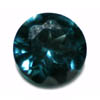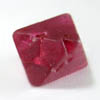- sale
- new items
- lovely beads
- wedding beads
- beads for teens
- for custom order
- newsletter
- recognition
- testimonials
- birthstones
- zodiac signs
- jewelry guide
SHOP BAG
![]() in your bag 0 items
in your bag 0 items
Spinel is a hard, variously colored mineral having usually octahedral crystals and occurring in igneous and carbonate rocks, it's a member of the larger spinel group of minerals. Two thousand years ago, gemstone traders did not know that spinel and corundum (the mineral of ruby and sapphire) have different chemical compositions and different crystal structures. Instead, gem traders thought that every bright red gemstone was a "ruby" and every deep blue gemstone was a "sapphire". So, for many centuries, most spinels were misidentified as sapphires or rubies and some spinel crystals were only recently identified as a spinel.
Spinel is transparent to opaque with a vitreous to dull luster. It may be colorless, but is usually various shades of red, blue, green, yellow, brown, or black. There is a unique natural white spinel, now lost, that surfaced briefly in what is now Sri Lanka. In addition to beautiful rich reds, spinel can be found in a range of pastel shades including a spectacular vibrant hot pink with a trace amount of orange, mined in Myanmar. Spinel also comes in beautiful blues which are sometimes called cobalt spinel, but these are very rare.
The earliest spinels, used as ornaments were found in Buddhist tombs in Afghanistan. Blue spinels have been found in England, dating back to the Roman occupation (51 BC to 400 AD). Some spinels are among the most famous gemstones: among them is the Black Prince's Ruby and the "Timur ruby" in the British Crown Jewels, and the "cote de Bretagne", formerly from the French Crown Jewels. The Samarian Spinel is the largest known spinel in the world, weighing 500 carats (100 g).
The only significant use of spinel is as a gemstone. Gem-quality red and blue spinels are very rare. They are much less abundant than rubies and sapphires of similar quality and color. Even with equivalent beauty and greater rarity their prices are much lower than ruby and sapphire. This is an example of how rarity has not determined the price.
The first synthetic spinel was produced in 1847 by Jacques-Joseph Ebelmen, a French Chemist. Commercial production of synthetic spinels was very limited in the 1800s. However, in the 1930s synthetic spinels in a wide variety of colors were produced to imitate popular gemstones such as aquamarine, zircon, tourmaline, emerald, chrysoberyl and ruby.



